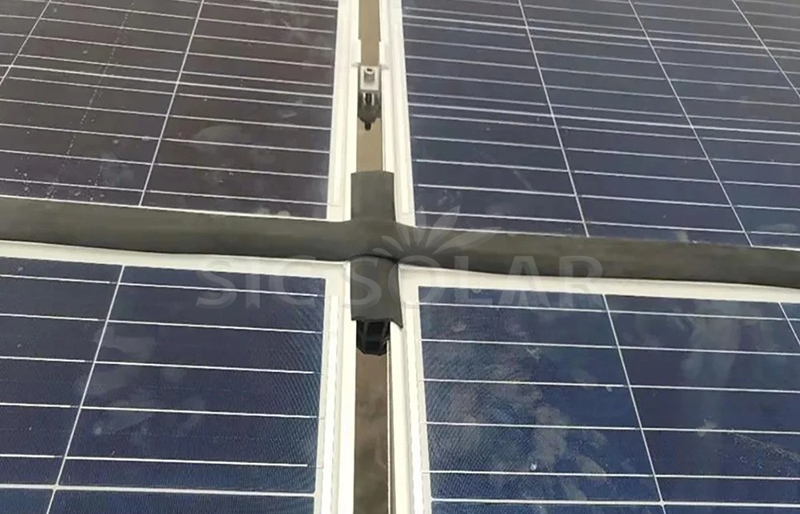Sealing the gaps between solar panels is essential for a variety of reasons, including water resistance, anti-debris, improved wind resistance, and aesthetics.
The importance of sealing gaps in solar panel installations:
- Waterproofing: Seals channel water out of vulnerable areas, preventing rainwater from seeping into crevices and damaging roofs or substructures.
- Anti-debris: Sealing minimizes the accumulation of leaves, dust, and other debris in the panel crevices, which can impede airflow and reduce panel efficiency.
- Improved wind resistance: A well-sealed array enhances stability and protects the installation from wind lift during storms.
- Aesthetics: Sealed, cohesive solar panel arrays provide a cleaner, more professional appearance.
Technology for sealing the gaps between solar panels:
- Weatherproof Flashing: Installed between panel rows or at the edges, flashing guides water away from gaps and is durable and highly effective in preventing water infiltration.
- Rubber Sealing Strip and gasket: Special tape or rubber gasket can fill small gaps between panels, making it easy to install and cost-effective.
- Rain gutters: Some installation systems integrate channels similar to rain gutters to redirect water flow, which is very useful for pitched roofs that are worried about water loss.
- UV-resistant silicone sealants: These sealants are used to fill gaps and form a waterproof barrier, making them versatile and compatible with a wide range of panel types.
Integrated sealing solutions: High-quality installation systems typically include pre-designed sealing mechanisms, such as those from SIC Solar, which feature precision-engineered components for tight panel alignment and enhanced sealing performance.

Steps to effectively seal the gap:
- Examine the gaps: Evaluate the spacing between panels and measure the gaps to determine the appropriate sealing solution.
- Cleaning areas: Remove dust, debris, or moisture from crevices to ensure proper bonding of tape, gasket, or sealant.
- Select the right material: Choose materials specifically designed for solar applications, such as UV-resistant sealants or high-durability tape.
- Apply sealing assembly: Install waterproof board, tape or sealant according to manufacturer’s instructions to ensure there are no air pockets.
- Testing and maintenance: After installation, check for leaks or vulnerabilities and perform regular maintenance to ensure that the sealing solution remains effective.
- The benefits of properly sealed solar panels include:
- Increased efficiency: Sealed systems reduce downtime due to weather-related issues or debris build-up.
- Extended service life: Protecting the roof and bracket system minimizes wear and tear.
- Reduce maintenance costs: Preventive sealing can reduce the need for frequent maintenance.
How SIC Solar can help:
SIC Solar is a trusted manufacturer of photovoltaic installation systems that simplify the installation process and improve system reliability. Their innovative designs include features such as integrated water management and precision engineering to ensure panels are securely aligned with minimal clearance. By using SIC Solar’s installation solutions, installers can achieve professional-grade sealing and long-lasting system performance.
In summary, sealing the gaps between solar panels is a critical step in any solar installation. Whether through waterproof panels, sealing tape or an advanced installation system, ensuring a waterproof and debris-free installation protects your investment and increases the efficiency of your solar system. Working with experts such as SIC Solar ensures your project is equipped with the best materials and technology, guaranteeing years of reliable performance.